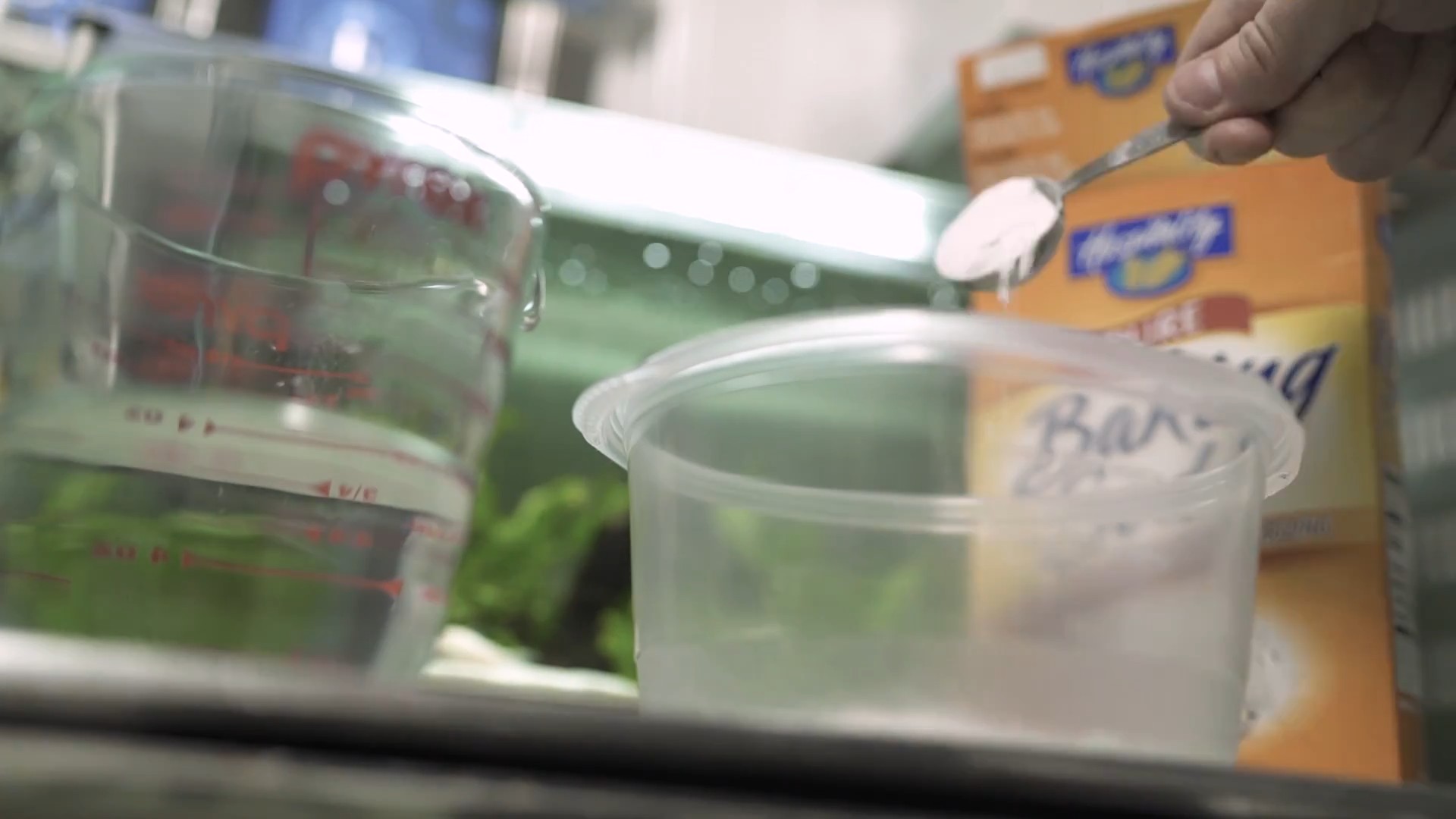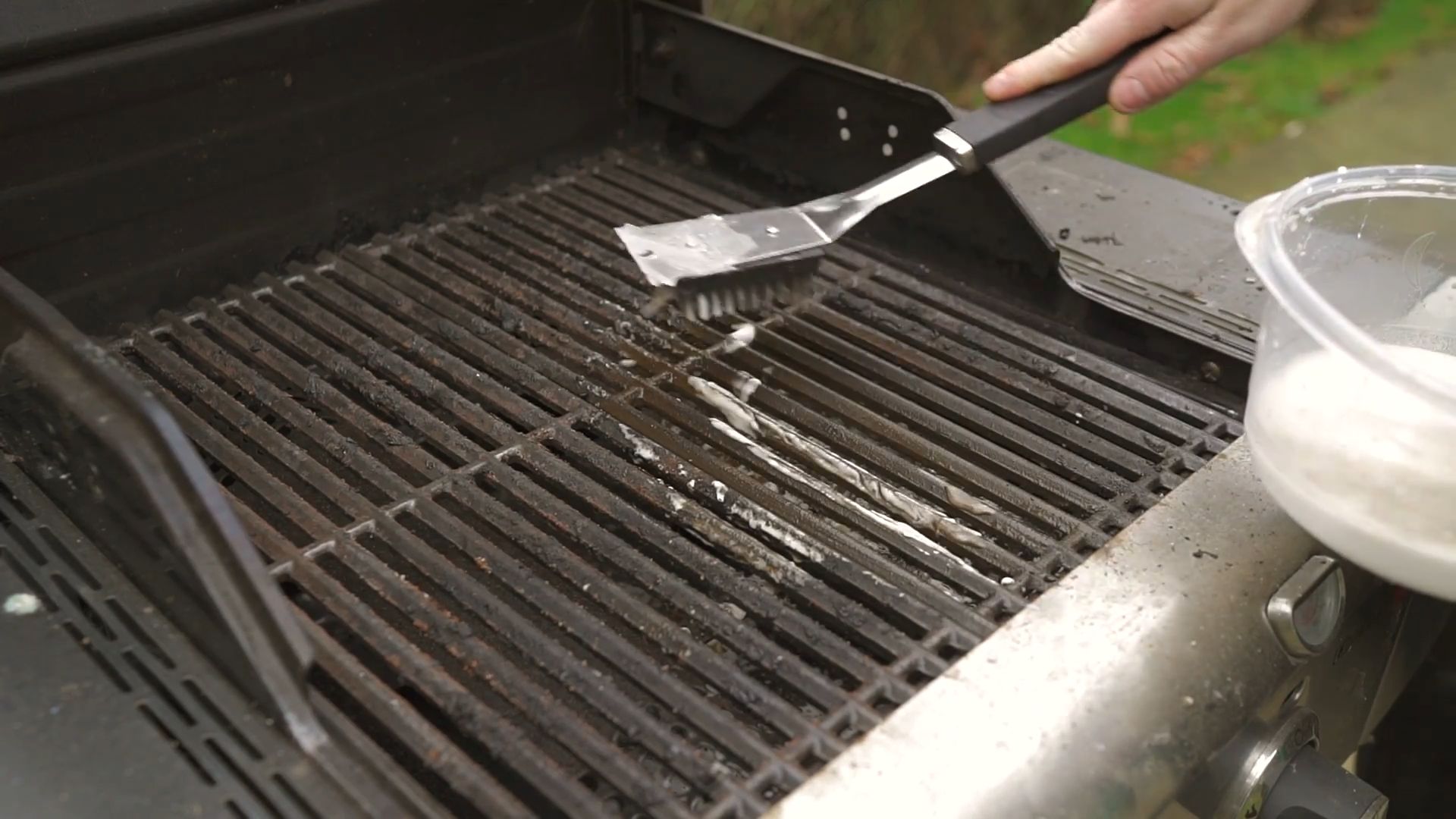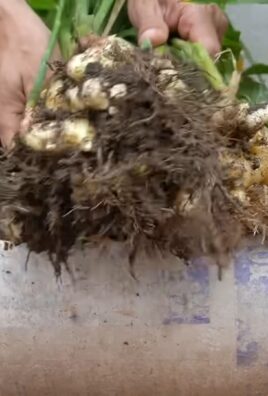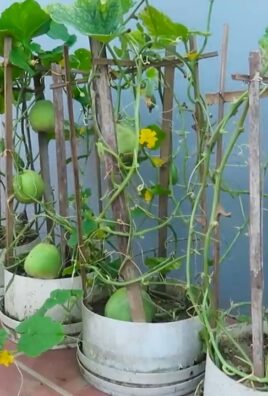Growing bush beans in containers might seem daunting, but trust me, it’s easier than you think! Imagine stepping outside your door and harvesting fresh, crisp beans for dinner – all grown by your own two hands, right on your patio or balcony. That’s the magic of container gardening, and it’s totally achievable, even if you’re a beginner.
The history of growing beans stretches back millennia, with evidence suggesting cultivation as far back as 7,000 years ago in the Americas. For centuries, beans have been a staple food source, providing essential nutrients and playing a vital role in sustainable agriculture. Now, we’re bringing that tradition into our modern lives, adapting it for smaller spaces and busy schedules.
Why should you try growing bush beans in containers? Well, for starters, it’s incredibly rewarding! Plus, it’s a fantastic way to enjoy fresh, organic produce without the need for a large garden. Container gardening also offers greater control over soil quality, watering, and pest management. Think of it as your own little edible oasis, tailored to your specific needs and preferences. I’m excited to share some simple DIY tricks and hacks that will help you successfully grow bush beans in containers, even if you’ve never gardened before. Let’s get started!

Growing Bush Beans in Containers: A Beginner’s Guide
Hey there, fellow gardening enthusiasts! I’m so excited to share my experience with growing bush beans in containers. It’s a fantastic way to enjoy fresh, homegrown beans even if you don’t have a sprawling backyard. Trust me, it’s easier than you think, and the reward of snapping off those crisp, delicious beans is totally worth it. So, let’s dive in!
Choosing the Right Container and Soil
Before we even think about seeds, we need to set the stage for success. That means picking the perfect container and filling it with the right kind of soil.
* Container Size: Bush beans don’t need a ton of space, but they do need enough room for their roots to spread. I’ve found that a container that’s at least 12 inches in diameter and 12 inches deep works perfectly. You can use a single large container for multiple plants or individual pots for each plant. I personally prefer using larger containers, as it reduces the frequency of watering.
* Drainage: This is crucial! Beans hate soggy feet. Make sure your container has plenty of drainage holes at the bottom. If it doesn’t, you can drill some yourself.
* Material: Plastic, terracotta, or even fabric pots will work. I’ve used all three with success. Just keep in mind that terracotta pots dry out faster than plastic ones, so you’ll need to water more frequently. Fabric pots are great for aeration and drainage, but they can also dry out quickly.
* Potting Mix: Don’t use garden soil! It’s too heavy and compacts easily, which can suffocate the roots. Instead, opt for a high-quality potting mix. Look for a mix that’s light, well-draining, and contains ingredients like peat moss, perlite, or vermiculite. I often amend my potting mix with compost for added nutrients.
Selecting Your Bush Bean Variety
There are tons of bush bean varieties to choose from, each with its own unique flavor and characteristics. Here are a few of my favorites:
* Blue Lake Bush: A classic choice, known for its excellent flavor and high yields.
* Contender: An early-maturing variety that’s resistant to common bean diseases.
* Provider: Another reliable and productive variety that’s well-suited for container gardening.
* Roma II: A flat-podded Italian bean with a rich, buttery flavor.
* Royal Burgundy: A beautiful purple bean that turns green when cooked. It’s a fun one to grow, especially if you have kids!
When choosing a variety, consider your climate and the length of the growing season. Some varieties are better suited for warmer climates, while others can tolerate cooler temperatures.
Planting Your Bush Bean Seeds
Now for the fun part – planting!
1. Timing is Key: Bush beans are warm-season crops, so wait until the danger of frost has passed before planting. The soil temperature should be at least 60°F (16°C). I usually plant my beans about two weeks after the last expected frost.
2. Soaking the Seeds (Optional): Some gardeners like to soak their bean seeds in water for a few hours before planting to help them germinate faster. I’ve tried it both ways, and I haven’t noticed a huge difference, but it can’t hurt.
3. Planting Depth: Sow the seeds about 1 inch deep and 2-3 inches apart. If you’re using a large container, you can plant the seeds in rows or scatter them evenly across the surface.
4. Watering: Gently water the soil after planting, making sure to moisten it thoroughly but not saturate it.
5. Location: Place the container in a sunny location that receives at least 6-8 hours of direct sunlight per day. Beans need plenty of sunlight to thrive.
Caring for Your Bush Bean Plants
Once your bean seeds have sprouted, it’s time to provide them with the care they need to grow and produce a bountiful harvest.
* Watering: Bush beans need consistent moisture, especially during flowering and pod development. Water deeply whenever the top inch of soil feels dry to the touch. Avoid overwatering, as this can lead to root rot. I usually water my beans every other day, but it depends on the weather.
* Fertilizing: Beans are relatively light feeders, but they still benefit from regular fertilization. I like to use a balanced liquid fertilizer diluted to half strength every two weeks. You can also amend the soil with compost or aged manure. Avoid using fertilizers that are high in nitrogen, as this can promote leafy growth at the expense of pod production.
* Support (Optional): Bush beans are generally self-supporting, but some varieties can get a bit leggy and may benefit from a small stake or trellis. This is especially helpful if you’re growing them in a windy location.
* Pest Control: Keep an eye out for common bean pests like aphids, bean beetles, and spider mites. You can usually control these pests with insecticidal soap or neem oil. I prefer to use organic pest control methods whenever possible.
* Weeding: Keep the container free of weeds, as they can compete with the beans for nutrients and water. Hand-pull any weeds that pop up.
* Mulching: Adding a layer of mulch to the surface of the soil can help retain moisture, suppress weeds, and regulate soil temperature. I like to use straw or shredded leaves as mulch.
Harvesting Your Bush Beans
The moment you’ve been waiting for – harvesting your homegrown beans!
1. Timing: Bush beans are typically ready to harvest about 50-60 days after planting. The pods should be firm, plump, and snap easily when bent. Don’t let the pods get too large or they’ll become tough and stringy.
2. Harvesting Technique: Gently snap the pods off the plant, being careful not to damage the stems or leaves. Harvest regularly to encourage continued production.
3. Storage: Freshly harvested bush beans are best eaten right away. However, you can store them in the refrigerator for up to a week. To store them, place them in a plastic bag or container and keep them in the crisper drawer. You can also freeze or can your beans for longer-term storage.
Troubleshooting Common Problems
Even with the best care, you may encounter some problems when growing bush beans in containers. Here are a few common issues and how to address them:
* Yellowing Leaves: This can be caused by a variety of factors, including overwatering, underwatering, nutrient deficiencies, or pests. Check the soil moisture and adjust your watering accordingly. Fertilize the plants with a balanced fertilizer. Inspect the leaves for pests and treat them as needed.
* Lack of Pod Production: This can be caused by insufficient sunlight, poor pollination, or high temperatures. Make sure the plants are getting at least 6-8 hours of direct sunlight per day. Hand-pollinate the flowers if necessary. Provide shade during the hottest part of the day.
* Root Rot: This is caused by overwatering and poor drainage. Make sure the container has plenty of drainage holes. Water only when the top inch of soil feels dry to the touch.
* Pest Infestations: As mentioned earlier, keep an eye out for common bean pests and treat them with insecticidal soap or neem oil.
Extra Tips for Success
Here are a few extra tips to help you grow the best bush beans possible:
* Succession Planting: Plant a new batch of seeds every 2-3 weeks to extend your harvest season.
* Companion Planting: Plant bush beans alongside other vegetables like carrots, cucumbers, and marigolds. These plants can help deter pests and improve soil health.
* Deadheading: Remove any dead or dying leaves and flowers to encourage new growth.
* Rotate Your Crops: If you’re growing beans in the same container year after year, rotate them with other crops to prevent soilborne diseases.
Enjoying Your Harvest
The best part of growing bush beans is, of course, enjoying the fruits (or rather, the beans!) of your labor. There are endless ways to prepare and enjoy your homegrown beans. You can steam them, sauté them, roast them, or add them to soups, stews, and salads. I love to simply sauté them with a little garlic and olive oil. They’re also delicious pickled or fermented.
Growing bush beans in containers is a rewarding and enjoyable experience. With a little bit of planning and care, you can enjoy a bountiful harvest of fresh, delicious beans right on your patio or balcony. So, get out there and start planting! Happy gardening!

Conclusion
So, there you have it! Growing bush beans in containers is not only achievable, but it’s also a remarkably rewarding experience. We’ve walked through the steps, from selecting the right container and soil to nurturing your plants and harvesting your bountiful crop. But why is this DIY trick a must-try?
First and foremost, it democratizes gardening. You don’t need acres of land to enjoy fresh, homegrown vegetables. Whether you have a small balcony, a sunny patio, or even just a well-lit windowsill, you can cultivate your own little bean patch. This accessibility makes fresh, healthy produce available to everyone, regardless of their living situation.
Secondly, container gardening offers unparalleled control. You dictate the soil composition, the watering schedule, and the amount of sunlight your plants receive. This level of control allows you to create the ideal environment for your bush beans to thrive, leading to healthier plants and a more abundant harvest. You can easily move your containers to chase the sun or protect them from harsh weather, something you can’t do with in-ground gardens.
Thirdly, it’s incredibly satisfying. There’s something deeply fulfilling about nurturing a plant from seed to harvest. Watching your bush beans sprout, grow, and produce delicious pods is a testament to your hard work and dedication. It’s a connection to nature that can be incredibly grounding and therapeutic.
But the benefits don’t stop there. Growing your own food reduces your carbon footprint by minimizing transportation and packaging. It also allows you to avoid harmful pesticides and herbicides, ensuring that you’re eating clean, healthy food. Plus, let’s be honest, homegrown bush beans just taste better! They’re fresher, more flavorful, and packed with nutrients.
Variations and Suggestions:
Don’t be afraid to experiment! Try different varieties of bush beans to find your favorites. Some popular choices include Blue Lake Bush Beans, Contender Bush Beans, and Provider Bush Beans. You can also companion plant your bush beans with other vegetables and herbs, such as marigolds (to deter pests) or basil (to improve flavor).
Consider adding a small trellis or support system to your container, even though bush beans are naturally compact. This can help to keep the plants upright and prevent the pods from touching the soil, reducing the risk of rot.
For a continuous harvest, try succession planting. Sow new seeds every two to three weeks to ensure a steady supply of fresh bush beans throughout the growing season.
Finally, remember to have fun! Gardening should be an enjoyable experience. Don’t be afraid to make mistakes and learn from them. The more you experiment, the better you’ll become at growing bush beans in containers.
We wholeheartedly encourage you to give this DIY trick a try. It’s a simple, rewarding, and sustainable way to enjoy fresh, homegrown vegetables. And most importantly, it’s a way to connect with nature and experience the joy of gardening, even in the smallest of spaces.
Once you’ve harvested your first crop of delicious bush beans, we’d love to hear about your experience! Share your tips, tricks, and photos in the comments below. Let’s create a community of container gardeners and inspire others to grow their own food. Happy gardening!
Frequently Asked Questions (FAQ)
What size container is best for growing bush beans?
The ideal container size for bush beans is at least 12 inches in diameter and 12 inches deep. This provides enough space for the roots to develop and allows for adequate drainage. You can use larger containers if you prefer, but avoid anything smaller than the recommended size, as it may stunt the growth of your plants. A five-gallon bucket or a large planter pot works well.
What type of soil should I use?
Use a high-quality potting mix that is well-draining and rich in organic matter. Avoid using garden soil, as it can be too heavy and compact for container gardening. Look for a potting mix that contains ingredients like peat moss, perlite, and vermiculite. You can also amend your potting mix with compost or aged manure to provide additional nutrients.
How often should I water my bush beans?
Bush beans need consistent moisture, especially during hot weather. Water deeply whenever the top inch of soil feels dry to the touch. Avoid overwatering, as this can lead to root rot. Check the soil moisture regularly and adjust your watering schedule accordingly. In general, you may need to water your plants daily or even twice a day during the hottest part of the summer.
How much sunlight do bush beans need?
Bush beans need at least six hours of sunlight per day to thrive. Choose a location that receives full sun for most of the day. If you live in a particularly hot climate, you may want to provide some afternoon shade to prevent the plants from overheating.
Do I need to fertilize my bush beans?
Yes, bush beans benefit from regular fertilization. Use a balanced fertilizer (e.g., 10-10-10) or a fertilizer specifically formulated for vegetables. Follow the instructions on the fertilizer package for application rates. You can also use organic fertilizers, such as compost tea or fish emulsion. Fertilize your plants every two to three weeks during the growing season.
How do I protect my bush beans from pests and diseases?
Inspect your plants regularly for signs of pests or diseases. Common pests that affect bush beans include aphids, bean beetles, and spider mites. You can control these pests with insecticidal soap, neem oil, or by handpicking them off the plants. To prevent diseases, ensure good air circulation around your plants and avoid overwatering. If you notice any signs of disease, remove the affected leaves or plants immediately.
When should I harvest my bush beans?
Bush beans are typically ready to harvest about 50 to 60 days after planting. Harvest the pods when they are young, tender, and about the size of a pencil. Pick the pods regularly to encourage continued production. Overripe pods will become tough and stringy.
Can I grow bush beans indoors?
While it’s possible to grow bush beans indoors, it can be challenging. You’ll need to provide them with plenty of light, either from a sunny window or a grow light. You’ll also need to ensure that they have adequate ventilation and humidity. Indoor-grown bush beans may not produce as many pods as those grown outdoors.
What are some common problems when growing bush beans in containers?
Some common problems include:
* **Yellowing leaves:** This can be caused by nutrient deficiencies, overwatering, or underwatering.
* **Lack of flowers or pods:** This can be caused by insufficient sunlight, poor pollination, or extreme temperatures.
* **Pest infestations:** Aphids, bean beetles, and spider mites can damage your plants.
* **Root rot:** This is caused by overwatering and poor drainage.
Can I save seeds from my bush beans to plant next year?
Yes, you can save seeds from your bush beans, but only if you are growing heirloom varieties. Hybrid varieties will not produce true-to-type seeds. To save seeds, allow some of the pods to dry completely on the plant. Once the pods are dry and brittle, shell the seeds and store them in a cool, dry place.




Leave a Comment